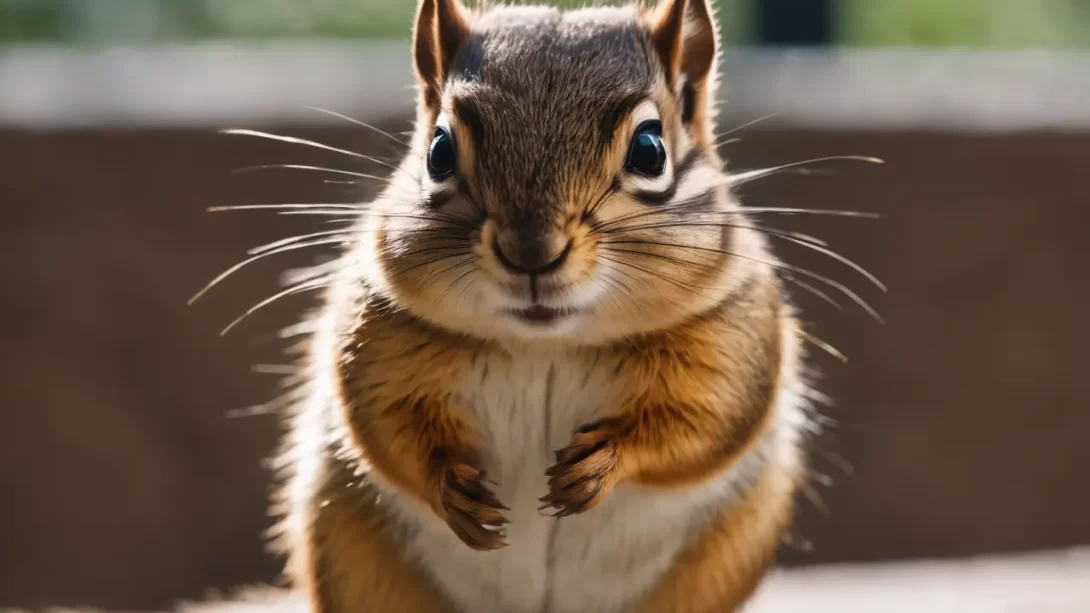Chipmunks, with their charming stripes and cheeky behavior, are a common sight in many gardens and woodlands. However, when these small rodents find their way into your home, they can become a nuisance. Chipmunks may enter houses in search of food or shelter, especially during colder months. While they are generally harmless, they can chew on wires, damage household items, and leave droppings. This article focuses on humane methods to catch a chipmunk in your house and safely release it back into the wild.
Identifying a Chipmunk in Your Home
Before you attempt to catch a chipmunk, it’s important to confirm its presence. Signs that you have a chipmunk in your house include small, round droppings, gnaw marks on furniture or wiring, and evidence of food pilfering, especially from areas where nuts or seeds are stored. You might also hear scratching or scurrying noises in the walls or ceiling, particularly at dawn and dusk when chipmunks are most active.
Chipmunk Behavior
Understanding chipmunk behavior is crucial for effectively catching one. Chipmunks are generally shy and elusive creatures. They prefer to stay close to walls and tight spaces to avoid open areas where they feel exposed. They are also attracted to places where food is readily available. By recognizing these behaviors and habits, you can better strategize where to place the trap and how to bait it.
Preparing to Catch the Chipmunk
When preparing to catch a chipmunk, prioritize safety and humane treatment. Use a live trap, which is designed to catch the animal without harming it. Ensure that the trap is the right size for chipmunks – too large, and they may not trigger it; too small, and they might be harmed. Place the trap in an area where you have noticed signs of chipmunk activity, and make sure it is stable and won’t tip over.
Before setting the trap, familiarize yourself with local wildlife laws. In some areas, trapping and relocating wildlife without a permit is illegal, and there may be regulations about how and where to release captured animals.
Choosing the Right Bait
Selecting effective bait is crucial for successfully trapping a chipmunk. These creatures are primarily attracted to nuts and seeds. Common bait options include peanut butter, sunflower seeds, pumpkin seeds, or small pieces of fresh fruit. The bait should be placed deep inside the trap to ensure the chipmunk fully enters and triggers the mechanism. Additionally, the scent of the bait plays a significant role in attracting the chipmunk, so choose something with a strong, appealing aroma.
Setting the Trap
Properly setting up the trap is essential for catching the chipmunk:
- Place the Trap in an Active Area: Identify areas where you’ve noticed signs of chipmunk activity, such as near entry points or along walls where they may travel.
- Positioning: Set the trap on a flat surface to ensure stability. If you suspect the chipmunk is in the attic or basement, place traps in these areas.
- Trap Setup: Follow the manufacturer’s instructions for setting the trap. Ensure it is set correctly and securely so that it will safely close once the chipmunk enters.
- Camouflaging: Optionally, you can camouflage the trap with leaves or paper to make it less conspicuous, which may increase the chances of capturing the chipmunk.
Monitoring and Checking the Trap
Regularly check the trap – at least twice a day – to see if you’ve caught the chipmunk. This is important not only for the success of your trapping effort but also for the humane treatment of the animal. Leaving a chipmunk trapped for an extended period can cause it stress and potentially harm it. If you accidentally trap a different animal, release it immediately.
Always use gloves when handling the trap to protect yourself from potential bites and to prevent the transfer of human scent, which might deter the chipmunk from entering the trap.
Safely Releasing the Chipmunk
Once you have successfully caught the chipmunk, it’s important to release it safely and humanely. Here are some guidelines for releasing the chipmunk:
- Choosing a Release Location: Find a suitable location away from residential areas, preferably near wooded areas or fields where chipmunks naturally live. The release site should provide adequate food sources and shelter for the chipmunk to thrive.
- Transporting the Chipmunk: When transporting the chipmunk to the release site, keep the trap covered with a light cloth to reduce stress. Ensure the trap is secure in your vehicle to prevent it from tipping over.
- Releasing the Chipmunk: Gently place the trap on the ground at the release site, open the door, and step back. Allow the chipmunk to exit the trap on its own. Do not attempt to handle or force the chipmunk out.
Preventing Future Intrusions
After releasing the chipmunk, take steps to prevent future intrusions into your home:
- Seal Entry Points: Inspect your home for any holes or gaps where chipmunks might enter. Seal these entry points with appropriate materials such as steel wool, hardware cloth, or caulking.
- Remove Food Sources: Keep food, especially seeds and nuts, in airtight containers and clean up any spills promptly. Avoid leaving pet food outdoors.
- Modify Habitat: Make your yard less attractive to chipmunks by removing piles of wood or debris where they might nest, and keep shrubs and trees trimmed away from the house.
- Use Repellents: Consider using natural repellents around the perimeter of your home. Scents like peppermint oil or cayenne pepper can deter chipmunks from entering.
Conclusion
Catching a chipmunk in your house requires patience, the right tools, and a humane approach. By using a live trap, appropriate bait, and carefully releasing the chipmunk into a suitable habitat, you can resolve the issue without harm. Remember, prevention is key in ensuring chipmunks and other wildlife stay outdoors where they belong. Taking proactive steps to secure your home and modify the surrounding habitat can go a long way in keeping these curious creatures at a safe distance.



